S/Ldr John (Ian) Blair
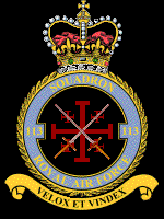
RAF 113 SQUADRON
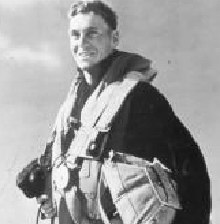
S/Ldr, John Ian Blair. Corporal, Arm/AG / Acting Sgt while he was with the 113 squadron, approx 1939 to Sept 1940. Joined the RAF as a boy entrant and trained as an armourer, 1134. Trained & qualified in the UK as a A/G in 1936. Posted to 113 with rank of AC-1 Arm/AG from the date of embarkation from Grantham in April 1938. He was classified as aircrew and flew operationally as Acting Sgt (unpaid) Cpl Arm/AG. At the time Cator was the C.O and the Flight Commander was F/Lt Dallamore.
In Sept 1940 113 Ground Crew (acting Observer) Corporal Ian Blair, a non-pilot safely landed the plane he was in after his pilot (P/O John Harry Reynolds, nickname Mouse) had been shot and killed. Ian was awarded the DFM for the incident and left the squadron to take pilot training. The following is S/Ldr Blair's detailed accounting of the events that day.
DERNA STORY
What follows is the true story of the incident over Derna, Libya which led to the Immediate Award of the DFM to Acting Sergeant John Blair, No. 550006 on 4th September 1940.
The Official Citation is as follows
“550006 Acting Sergeant John Blair ,No 113 Squadron, Middle East Command .
On 4th September, 1940, during operations over Derna , when the pilot of the aircraft was killed instantly by enemy action, Sergeant Blair, the observer, succeeded in getting the aircraft under control and taking evasive action while the air gunner fought off the enemy aircraft. Assisted by the air gunner, he then removed the dead pilot from his seat and, without previous flying experience, achieved a safe landing after a flight of 350 miles. By his courage, devotion to duty and determination he saved the lives of both himself and the air gunner as well as saving the aircraft.”
London Gazette.24.9.40.
The secquence of events are explained by J. Blair and are as follows:-
I was briefed to carry out a bombing raid on Derna Landing Ground (See Navigators Log Sheet Fig.1) the track was to be a two legged with a final approach to the Target on a East to West approach. Bomb load was 20 & 40 lb. Fragmentation bombs carried in small bomb containers ,(SBC) 4 in number, this required the removal of the Bomb doors of the Blenheim, and accounted for the low Indicated Air Speed (IAS)
The aircraft was airborne at 0820 hrs. As usual the weather was good, the flight was uneventful. At 0917 hrs the log shows an alteration of course was made to bring the aircraft on to the target at a height of 16,000 ft. having let down from 19,000ft. This latter 40 minutes were used in part to make the necessary settings on the bomb sight, and to position myself by the bomb sight , in my case, I always knelt on the floor with my chest resting on the bomb aimers folding seat ( dropped down to the horizontal position from the starboard side of the aircraft, approximately in line with the control column). I found that in this position my hands were free to adjust the bombsight levels and compass (red on red) and obtain a good line of sight in order to track the target.
I had just released my bombs when there was a loud bang on the Port side and when I looked round in the direction of the noise, (Fig.2.) I saw the pilot was slumped forward on the controls, and out of the port window I saw a CR 42 breaking off as if he was preparing for another attack.
My aircraft was beginning to dive, I struggled to my feet grabbed at the yoke of the control column and as I pulled it back (Fig 3.) with some difficulty against the weight of the pilot, I was able to exert some right pressure and turn the aircraft to starboard in a northerly direction, I concluded the hostile aircraft would not follow us very far, as it had very limited duration. I had gained a little height, but was having difficulty from my standing position and the added weight of the pilot against the control column.
I called to my air gunner and asked him to assist in the removal of the pilot from his seat, “Hank” had to crawl from the turret through the aircraft “ well” to get to the front cockpit, the pilot was carefully removed and placed on the floor of the aircraft, his parachute remained in situ, which I needed in order to see over the instruments etc. Hank returned to the turret, and when I realised the aircraft was O.K. I set a course for base, aiming to make a landfall near Mersa Matruh. I was unable to maintain my navigators log from this point on.
It was a long flight back, I had plenty of time to consider the options, I discussed with Hank what we should do, did he wish to bail out over base, or to stay in the aircraft, he opted to stay with the aircraft.
I outlined my plan to him which was, to make a circuit on arrival at base, and a long approach from east to west, high over the boundary “fence” which was a line of telephone cables on poles, I had no wish to run into these.
The return flight took about 1- 3/4 hours I understand that the W/Op Hank sent a message to base by W/T telling them of our plight, in consequence there was a very large party of spectators and crash vehicles awaiting our “touchdown” on arrival. I was unaware that a message had been sent.
I made landfall not far from Mersa, it was a short time before I reached my base Maten Bagush, which was about 3 miles inland and also Headquarters 202 Group, the message sent by W/op generated a very large crowd of spectators.
I did a very wide circuit of the LG, there were no other aircraft visible in the circuit as far as I could see, even if there had been any pilot giving me assistance on the approach I doubt if I should have taken much notice or be aware of what he was trying to indicate, there was no communication R/T
From my observations of my skipper's flying , we had done many hours together,. I knew that I had to, change pitch of the propeller, engage rich mixture control, and when the wheels went down there would be a lot of vibration, and loss of speed which I would have to compensate for with increased revs, all of these actions were carried out on the down wind leg , and on the final approach I kept at about 85 mph, knowing that there would be a marked change of aircraft attitude when the flaps were lowered, I trimmed the aircraft tail heavy, (too much,) as it happened, because I had to exert forward stick pressure on the control column in order to maintain my approach path and speed, being aware of the telephone poles and lines at the touch down end of the strip. As soon as I passed over the telephone lines, I throttled back and because the tail trim was tail heavy, the aircraft flared out nicely and sat on the ground. I kept the stick hard backwards with all my strength and eventually the aircraft came to a halt in a cloud of dust.
I do not remember shutting off the engines but they were stopped.
First aboard as I stood up on the seat, was the Medical Officer, I exchanged a few words about the pilot ,the MO looked at me and sent me off to sick quarters.
It is alleged that the AOC who witnessed the landing said “ If that airman can fly an aircraft without a training course, it time he was sent on one”
I note from my service record, dated 20/5/40 that I had been” recommended for training airman pilot “following the normal selection and interview procedure. I was taken off operational flying after the incident and subsequently posted to Elementary Flying Training School, my record shows the date as 4 November 1940, when I arrived in Nairobi.
For the two months approximately that I remained with 113 Squadron no one involved in the incident or any Court of Enquiry, approached me for any further explanations of the flight, or was I aware that there was an investigation of any kind into the demise of my pilot. It is reported somewhere that the pilot was killed by a bullet fired by the air gunner; it is not possible for the Air Gunner to fire his guns forward for a variety of technical reasons.
I always maintained that the pilot of my aircraft was killed by a random shot, which entered low down on the port side in an upward direction, and I presume went out through the open cockpit roof.
The P.R. boys had a field day, Figs 4 & 5, are the best shots which are now well known, a number of other pictures appear in the “Blenheim “ History by Graham Warner.
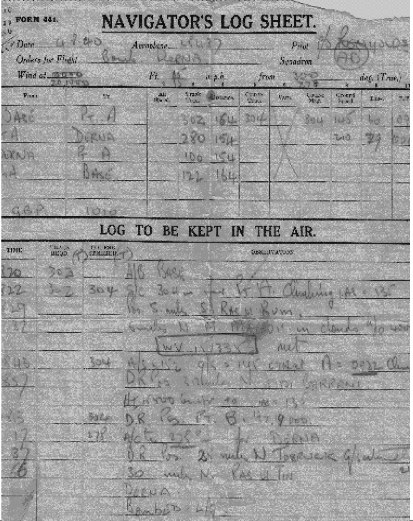
Fig 1
Blood stained Nav log - minor errors in date and times
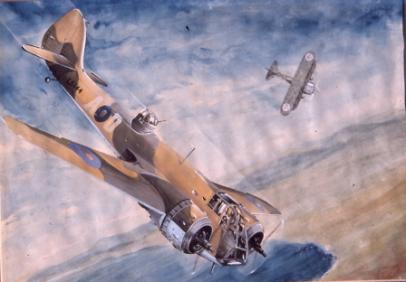
Fig 2:
“out of the port window, I saw a CR 42 breaking off as if he was preparing for another attack”.
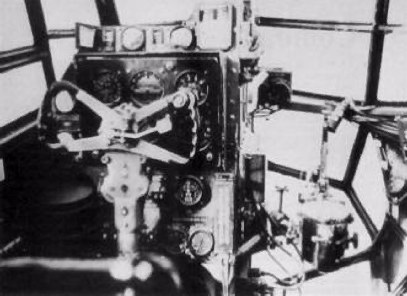
Fig 3
“ in my case, I always knelt on the floor with my chest resting on the bomb aimers folding seat ( dropped down to the horizontal position from the starboard side of the aircraft, approximately in line with the control column), I found that in this position my hands were free to adjust the bombsight levels and compass (red on red) and obtain a good line of sight in order to track the target”....
“.... I struggled to my feet grabbed at the yoke of the control column and as I pulled it back with some difficulty, against the weight of the pilot I was able to exert some right pressure and turn the aircraft to starboard in a northerly direction”.
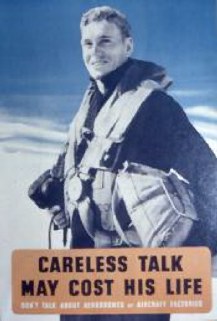
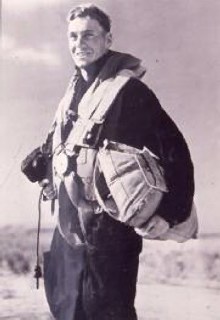
Fig 5: dated November 1941 Fig 4: PR photograph September 1940
SOURCE: S/Ldr Ian Blair, Feb 2009
BACK TO S/Ldr Ian Blair main Listing in personnel section
